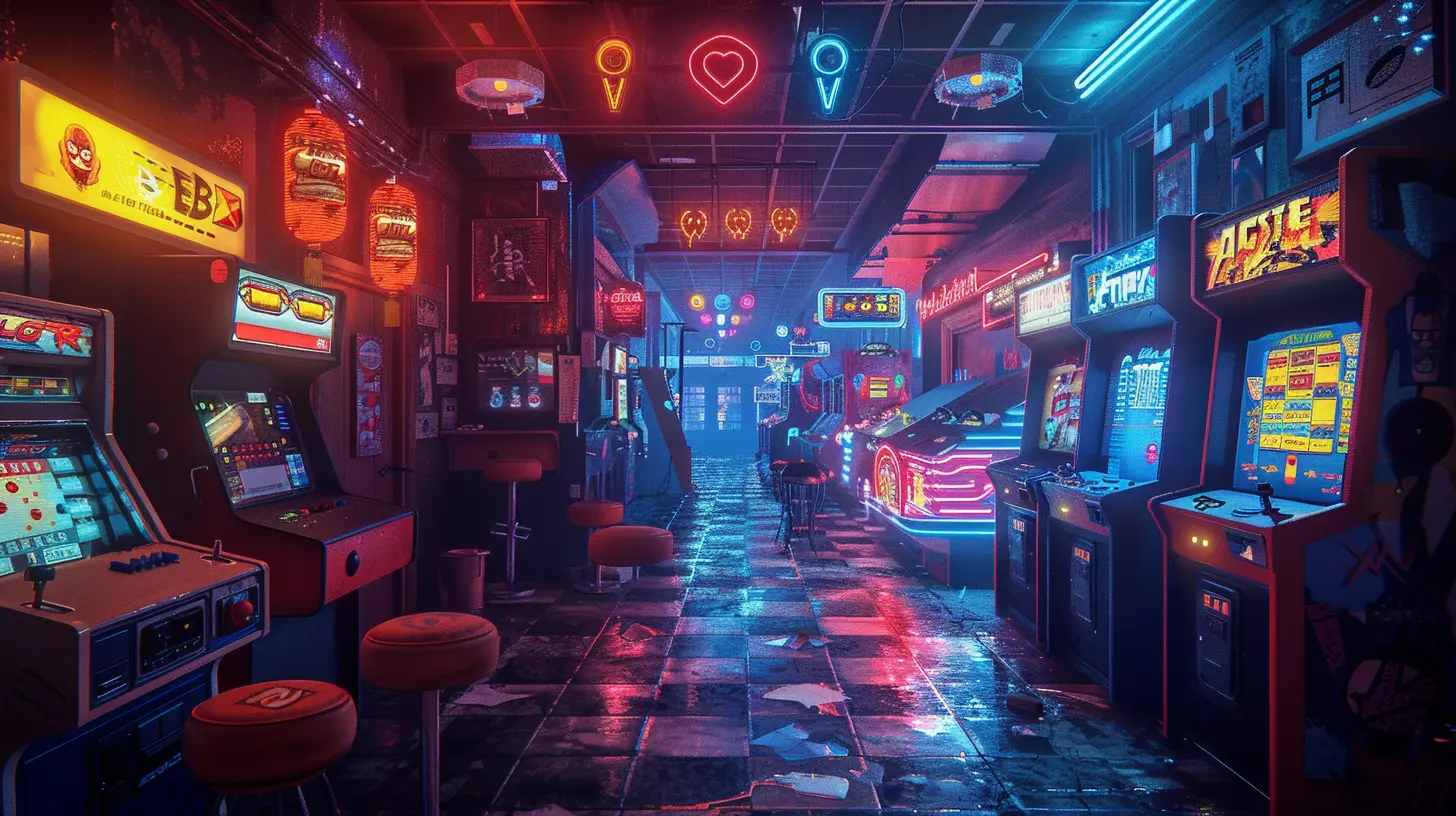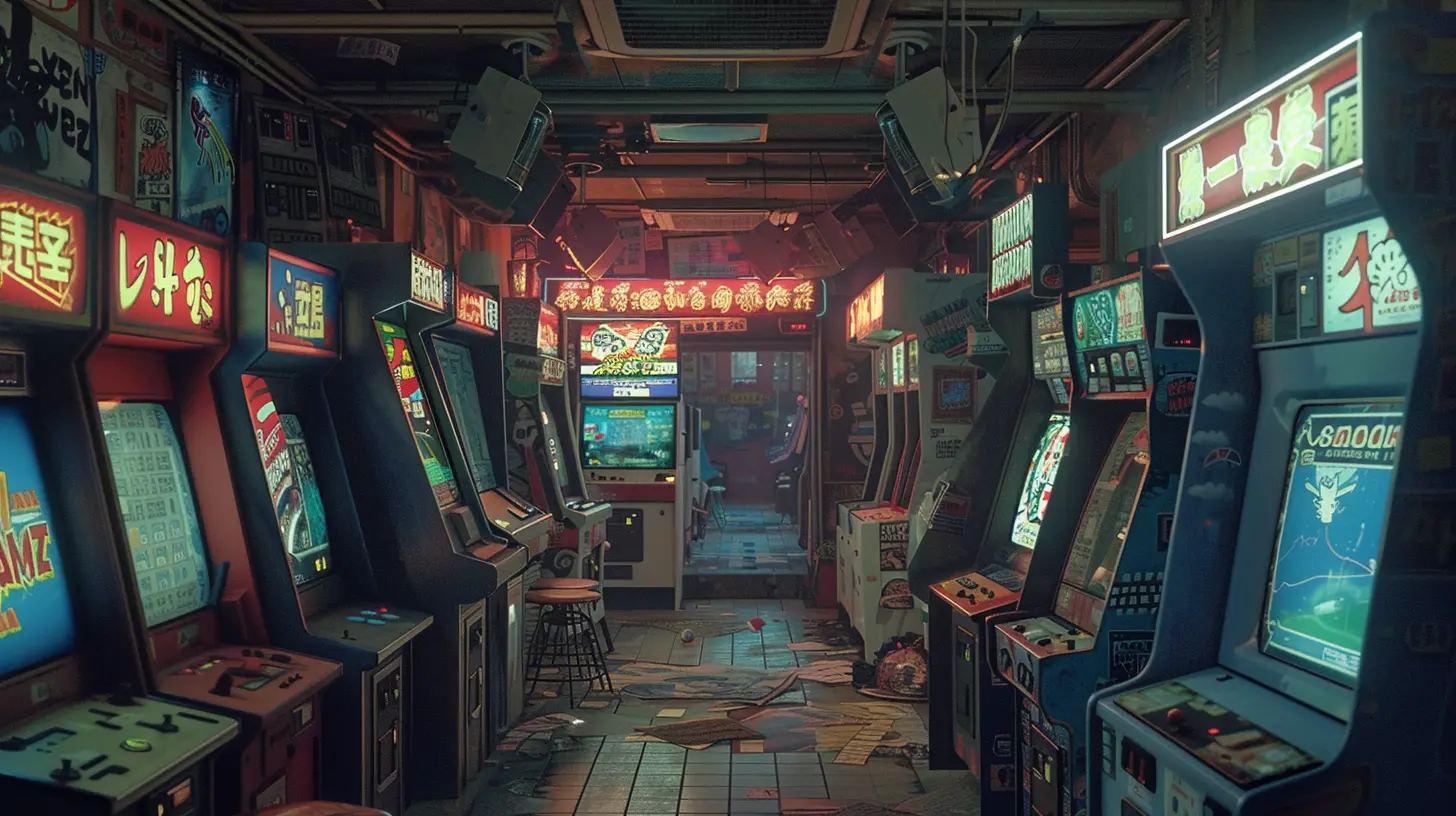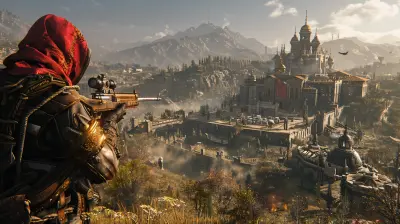Breaking the Mold: Arcade Games That Defied the Genre
27 September 2025
Arcade games. Just hearing those words brings back a flood of pixelated memories—blinking lights, chiptune music, the clack of buttons, and the ever-present threat of losing your last quarter to a brutal boss fight. Most of us think of arcade games as side-scrolling shooters, beat-em-ups, or high score chasers. But every now and then, a game comes along that flips the script and refuses to play by the rules.
These genre-bending titles didn’t just carve out their own niche; they pushed the boundaries of what arcade games could be. They made us rethink the arcade experience—not just in how we play, but in how we felt while playing.
So grab your joystick and settle into that sticky arcade stool because we’re diving deep into the boldest, weirdest, and most revolutionary arcade games that said, “Nah, we’re gonna do our own thing.”
What Makes an Arcade Game “Genre-Defying”?
Before we dive into specific titles, let’s break down what we mean by “breaking the mold.” Arcade games usually stick to well-worn paths: platformers, shooters, fighters, racers. They're designed to be easy to pick up, tough to master, and most importantly—fast-paced so you run out of quarters quickly.But some games? They said, “Hold my root beer” and went in a completely different direction.
These are the games that:
- Mixed genres in unusual ways
- Changed how we interact with the game
- Introduced storytelling where there usually was none
- Took artistic or mechanical risks when no one else dared
Now let’s get into some game-changers.
1. Dragon’s Lair (1983) – A Cartoon You Could Play?
Let’s start with one of the most visually striking arcade games of all time.When Dragon’s Lair hit arcades in 1983, jaws hit the floor. Unlike every other game at the time with pixelated sprites and blocky graphics, Dragon’s Lair looked like a Disney movie. That’s because it was animated by Don Bluth, a former Disney animator.
But gameplay-wise… it was completely different. Instead of controlling your character freely, you had to make split-second decisions—pressing a direction or hitting a button at just the right moment. Essentially, it was the godfather of the modern quick-time event (QTE).
Did it feel weird at first? Absolutely. Some players argued it was more movie than game. But it forced players to think differently, and man, did it turn heads.
2. Polybius (1981?) – The Urban Legend That Lives On
We can't confirm this one existed in real arcades (and if it did, it was probably short-lived), but its impact on arcade game mythology is huge.Polybius is the bigfoot of arcade games. Supposedly released in 1981, it was a mysterious black cabinet that caused strange side effects—from seizures to memory loss. The game was reportedly a strange mix of puzzle, shooter, and psychological experiment.
It likely never existed. Or maybe it did? Either way, the myth itself influenced a generation of indie horror games, documentaries, and conspiracy theories.
Why include it here? Because the mere ghost of Polybius challenged how we think about the power of games. Can a game change your mind—or break it?
3. Q*bert (1982) – Isometric Madness Meets Foul-Mouthed Bouncing
Qbert didn’t just look weird—it played* weird.While most games had you moving in straight lines and flat levels, Q*bert introduced isometric gameplay. You controlled a little orange guy bouncing diagonally down a pyramid of cubes, changing their colors while dodging strange enemies.
And the best part? If you messed up, Q*bert let out what looked like a curse word in cartoon symbols. It was hilarious and also a little rebellious for the time.
It was a puzzle-platformer before we had that label. Unique visuals, quirky personality, and gameplay that defied logic at first glance? Q*bert was definitely coloring way outside the lines.
4. Battlezone (1980) – The World’s First Tank Simulator
Take a moment to imagine playing a game through a virtual window at an arcade cabinet. That’s what Battlezone did when it dropped in 1980. Some even consider it the first virtual reality game.Instead of flat sprites, Battlezone used vector graphics to give players a pseudo-3D world. You controlled a tank and looked through a periscope-like viewer for an immersive experience.
Arcade-goers were used to quick reflexes and simple controls. Battlezone made you think. You had to track enemy tanks, aim, strategize—it was like chess with explosions.
The military even used a version of it for training. How’s that for genre-defying?
5. Paperboy (1985) – Delivering Newspapers Was Never This Cool
What do you get when you cross a bicycle, newspaper, and arcade-style chaos? One of the weirdest—yet incredibly fun—arcade games ever.Paperboy put you in the shoes of a suburban paper delivery kid. Your job? Hurl newspapers at mailboxes, avoid road hazards, and keep customers happy. That’s it.
Sounds simple, right? But it was packed with odd humor, quirky controls (you used a handlebar-like controller!), and offbeat challenges. Where else would you dodge breakdancers, runaway tires, and the Grim Reaper during your after-school job?
It made the mundane feel like an action movie. And that’s a radical departure from space battles and ninja fights.
6. Tapper (1983) – Bartending as an Extreme Sport
Let’s just take a moment to honor a game where you serve beer to impatient customers… at speed.Tapper was unique in that it didn't revolve around violence, racing, or platforming. Instead, you played a bartender slinging drinks down the bar. But don’t be fooled—it was fast, frantic, and oddly stressful, in a good way.
What set it apart? That iconic beer tap handle controller. And the fact that it was originally sponsored by Budweiser. Yep, an adult-beverage arcade game.
It was one of the few games that made working service feel like a high-stakes sport. Who knew bartending could have boss fight-level tension?
7. Marble Madness (1984) – Physics Before Physics Were Cool
Marble Madness is one of those “how did they even come up with this?” games.You control a marble, rolling it through tricky obstacle courses using a trackball. The game had momentum, weight, inertia—things we rarely saw in arcade games back then. It literally introduced people to physics-based gameplay before that was even a term.
Plus, levels were weird. Really weird. You could find yourself rolling through abstract geometric nightmares while racing a clock.
This game made you feel the controls. It was about finesse, not button mashing—and that was a bold move in an era of punchy, action-packed titles.
8. Smash TV (1990) – Reality TV Meets Mayhem
“Big Money! Big Prizes! I love it!”Smash TV was like putting The Hunger Games, RoboCop, and Wheel of Fortune in a blender. It was a top-down twin-stick shooter where you fought through murderous game show levels for prizes and survival.
While other arcade games were still doing the whole “save the princess” thing, Smash TV offered a satirical take on consumerism, violence, and media. Yeah—it was deep under all that blood and bullets.
Plus, the twin-stick shooting mechanics were ahead of their time, paving the way for games like Geometry Wars and Hotline Miami.
9. OutRun (1986) – More Than Just a Racer
Racing games were already a staple by the mid-80s, but OutRun brought something fresh.This wasn’t just about crossing the finish line—it was about style. You drove a red Ferrari with your pixel-girlfriend riding shotgun, choosing different routes on a branching path system. Each fork led to a new location and music track.
Speaking of music, the soundtrack was downright iconic. You could choose your song before racing. Imagine that level of customization back then!
OutRun turned racing into a visual and audio experience. You weren’t just racing—you were on a road trip through a digital dream.
Why These Games Matter Today
It’s easy to think of arcades as nostalgia machines, but these experimental titles paved the way for modern gaming innovation. Games today blend genres all the time: action-RPGs, puzzle-platformers, narrative shooters.These trailblazing arcade games laid the groundwork for that. They dared to be different when conformity meant success (and quarters). Without them, we probably wouldn’t have the boundary-pushing games we enjoy today.
Final Thoughts: Being Different Pays Off
In a time when standing out was risky, these games shouted from the rooftops, “We are not like the others.” And guess what? Most of them became legends—loved not just for being fun but for being bold.Whether it was turning bartending into a thrill ride, turning an animated movie into a game, or questioning reality itself (we’re looking at you, Polybius), these titles proved that innovation and weirdness aren't just welcome—they're necessary.
So next time you boot up a game that feels like nothing you've played before, remember: someone had to break the mold first.
all images in this post were generated using AI tools
Category:
Arcade GamesAuthor:

Francesca West
Discussion
rate this article
1 comments
Kirk Dorsey
This article brilliantly highlights how innovative arcade games reshaped expectations and pushed boundaries. From unexpected gameplay mechanics to unique storytelling, these titles not only entertained but also redefined the genre. It's a fascinating exploration of creativity in gaming—truly a must-read for enthusiasts and newcomers alike!
October 5, 2025 at 4:19 AM

Francesca West
Thank you for your insightful comment! I'm glad you found the exploration of innovative arcade games engaging and impactful. Your enthusiasm is truly appreciated!


